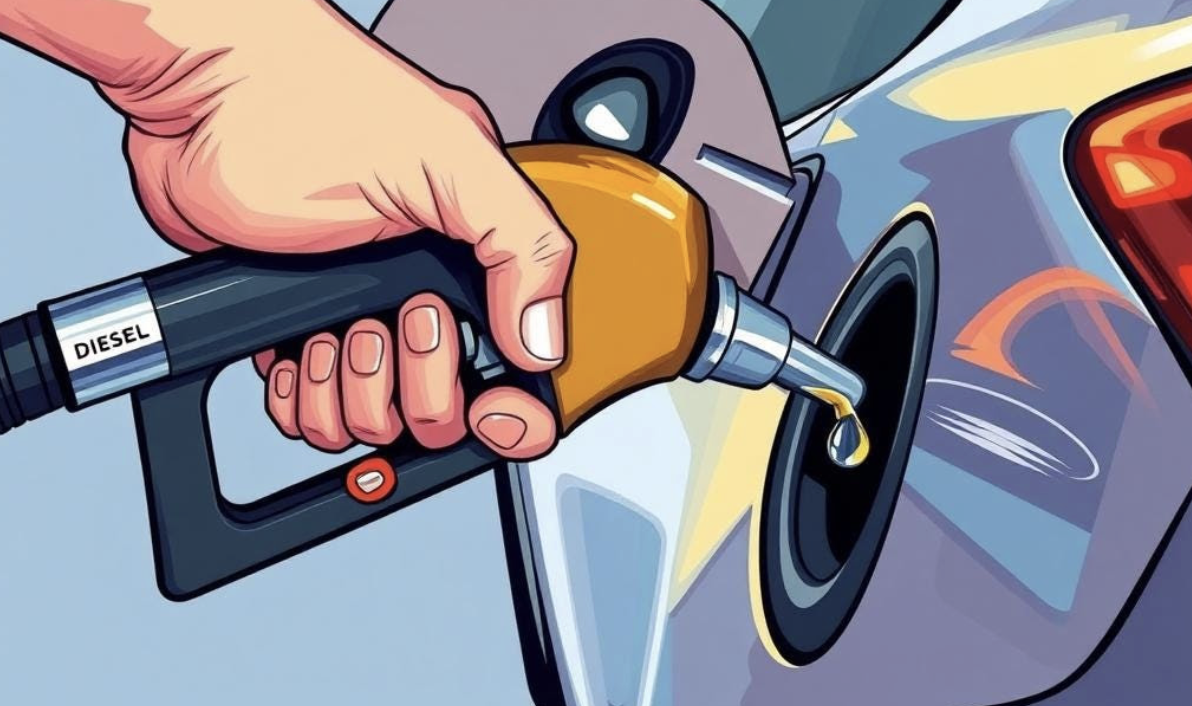
- Details
- By Professor Victoria Sutton
Guest Opinion. The War on Diesel may be coming to a close with the recent proposed rulemaking to withdraw emission controls for diesel fuel.
Diesel is not innocent by any means, but it has been unduly vilified in comparison to gasoline. The dark smoke that was emitted from diesel trucks and buses looked ominous enough, but it was particulate matter (PM) and that could be controlled with filters, while the invisible CO2 emissions of gasoline cars seemed deceptively clean and not possible to reduce without compromising safety with lighter car bodies and squeezing out the last bit of efficiency possible from gas combustion technology.
Comparatively, diesel fuel emits more NOx (nitrous oxides) and PM (particulate matter); while gasoline fuel emits more CO2 (carbon dioxide), CO (carbon monoxide) and HC (hydrocarbons) per gallon of fuel. Modern diesel engines emit less particulate matter (PM) than gasoline engines, due to PM control technology. Finally, because diesel engines are more efficient than gasoline engines by about 30% , that further favors the emissions reductions possible with diesel engines.
Yet four major global cities are planning to ban all diesel vehicles by 2025. Australia is trying to force consumer preferences. The additional controls for the new GHGs may be the straws breaking the camel’s back without a significant return on the sacrifice of engine life, efficiency and costs.
I have always preferred diesel engines that are more fuel efficient, have more power, but not as much acceleration speed as a gasoline car. So I have observed the reduction in automobile diesel fueling stations over the past several years. An area called the “alternative fuel corridor” in South Carolina has all but eliminated auto diesel in a misguided belief that gasoline is cleaner than diesel fuel. It is also hard to find in the northeastern U.S. if you are not fueling a farm tractor or a diesel 18-wheeler.
The Contribution to GHG (Greenhouse Gases) by Diesel
While gasoline still dominates individual cars for transportation, it is diesel that rules the economy. Trucks for transporting goods rely almost exclusively on diesel fuel. All transportation in the U.S. accounts for 38% of CO2 emissions, which is the standard for measuring greenhouse gas emissions. So reductions in CO2 emissions in transportation should make an impact given it makes up 38% of emissions of CO2. However, diesel only makes up 9% of those emissions.
In the beginning. . .
The authority for regulating GHGs was interpreted from the word “contribution” in the Clean Air Act of 1990. (I remember one of my first tasks was pouring through the draft hard copy pages of the Clean Air Act assessing its adherence to science as a senior policy analyst in the White House Science Office.—it was about 800 pages long.) It amended the Clean Air Act of 1977, preceded by the Clean Air Act of 1963. The Act established six criteria air pollutants: PM (particulate matter); NOx (nitrous oxides); SOx (sulfur dioxide, etc.); Pb (Lead); Ozone (O3) and CO (carbon monoxide), and EPA sets standards for those pollutants (sometimes in collaboration with other agencies, e.g., for cars).
In 2009, the Obama Administration, relying on the authority of the Clean Air Act, established additional pollutants, the major GHGs: carbon dioxide (CO2), methane, nitrous oxide (N2 O), hydrofluorocarbons (HFCs), perfluorocarbons (PFCs), and sulfur hexafluoride (SF6)—and found they constitute “air pollution”.
The Obama rule was challenged and in judicial review, ultimately by the U.S. Supreme Court, the court found that EPA could identify CO2 as a pollutant. I found this antithetical to science, since we need CO2 to live on earth (plants cannot survive without it), unlike all of the other criteria pollutants and GHGs. Calling CO2 a pollutant was a bridge too far, yet the U.S. Supreme Court found EPA had the authority to make an endangerment finding for CO2.
On July 29, 2025, EPA proposed to rescind the 2009 Greenhouse Gas Endangerment Finding. “The Endangerment Finding is a prerequisite for regulating emissions from new motor vehicles and new motor vehicle engines.”
To counter this bizarre holding, the recent rulemaking proposes that the Obama Administration “misconstrued” the U.S. Supreme Court’s opinion on CO2 as a pollutant in Massachusetts v. EPA, 594 U.S. 497 (2007). The rulemaking argues:
Read on its own terms, Massachusetts did not require the Agency to find that GHGs are subject to regulation under CAA section 202(a) and does not support our implementation of the statute since 2009.
Currently, the rulemaking is in an extended comment period. It is all but certain to be immediately challenged in judicial review the moment the rule is final, if it is published as a final rule.
What this means for diesel fuel and diesel engines
The existing controls on PM and NOx are working and make diesel cleaner than gasoline, so that will not change. However, the controls on vehicles that specifically target GHGs that were being regulated are what are being proposed for withdrawal. With CO2 emissions being greater from gasoline engines than that of diesel engines, gasoline engines would no longer be engineered to reduce CO2.
Diesel fuel has been largely misunderstood and deserves a little more respect.
To read more articles by Professor Sutton go to: https://profvictoria.substack.
Professor Victoria Sutton (Lumbee) is Director of the Center for Biodefense, Law & Public Policy and an Associated Faculty Member of The Military Law Center of Texas Tech University School of Law.
Help us defend tribal sovereignty.
At Native News Online, our mission is rooted in telling the stories that strengthen sovereignty and uplift Indigenous voices — not just at year’s end, but every single day.
Because of your generosity last year, we were able to keep our reporters on the ground in tribal communities, at national gatherings and in the halls of Congress — covering the issues that matter most to Indian Country: sovereignty, culture, education, health and economic opportunity.
That support sustained us through a tough year in 2025. Now, as we look to the year ahead, we need your help right now to ensure warrior journalism remains strong — reporting that defends tribal sovereignty, amplifies Native truth, and holds power accountable.
 The stakes couldn't be higher. Your support keeps Native voices heard, Native stories told and Native sovereignty defended.
The stakes couldn't be higher. Your support keeps Native voices heard, Native stories told and Native sovereignty defended.
Stand with Warrior Journalism today.
Levi Rickert (Potawatomi), Editor & Publisher

